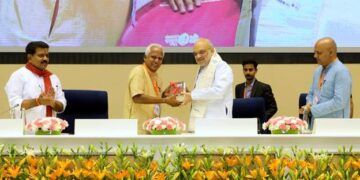By: Ikkz Ikbal
As the debate around reservation policies in Jammu and Kashmir continues to intensify, the question remains: is the reservation system a step forward in addressing historical injustices, or does it risk compromising the principles of fairness and meritocracy? The recent amendments to the reservation framework have sparked widespread discussions about their impact on society, fairness, and future opportunities.
Historical Context and Recent Developments
The roots of reservation in India date back to 1902 when Shahu Maharaj introduced quotas for non-Brahmin and backward classes in Kolhapur. Post-independence, this principle was enshrined in the Indian Constitution, offering Scheduled Castes (SCs) and Scheduled Tribes (STs) reservation in education and employment. The system evolved further with the implementation of the Mandal Commission recommendations in 1990, extending 27% reservation to Other Backward Classes (OBCs).
In Jammu and Kashmir, the reservation system has undergone significant changes, with the recent passage of the Constitution (Jammu and Kashmir) Scheduled Tribes Order (Amendment) Bill, 2024. This legislation expanded the reservation quota to 70%, including a 10% increase in the ST quota and the inclusion of 15 new castes under the OBC category. While proponents argue that this move addresses historical inequities, critics view it as a step away from meritocracy.
A Divisive Policy: Arguments For and Against
Advocates of the enhanced reservation quotas view them as a beacon of hope for marginalized communities. By reserving opportunities in education and employment, these policies aim to uplift those who have long been excluded from societal privileges. For communities newly included under ST and OBC categories, such as the Paharis, this policy represents long-awaited recognition of their socio-economic struggles.
However, detractors argue that the increase in reservation, at the cost of open merit, risks alienating a significant portion of the population. With open merit now reduced to just 30%, many feel their aspirations are being sidelined in favor of political expediency. Critics warn that over-reliance on reservation perpetuates a culture of entitlement, leaving root causes like poor access to quality education and socio-economic disparities unaddressed.
Striking the Right Balance
The controversy surrounding the 70% reservation highlights a deeper need for balance. While reservations are an essential tool for social equity, their overextension may erode meritocratic principles and foster societal tensions. A more nuanced approach is required to achieve inclusivity without undermining competitiveness.
Investing in education and skill development for marginalized groups can be a sustainable alternative to extensive quotas. Providing free coaching, scholarships, and access to quality education can empower individuals to compete on equal footing. The government could also optimize existing resources, such as schools and colleges, to deliver targeted support to underprivileged communities.
The Way Forward
The reservation system in its current form is a double-edged sword. While it offers opportunities to the disadvantaged, it risks fostering dependency and exacerbating societal divides. To create a truly inclusive society, we must move beyond temporary fixes and address the underlying causes of inequality.
As citizens of Jammu and Kashmir, it is our responsibility to advocate for policies that promote both social justice and meritocracy. The debate around reservation is not just about percentages but about shaping a fair and equitable future for all. Only by fostering dialogue, holding policymakers accountable, and investing in systemic reforms can we hope to strike the right balance between equity and excellence.
The growing dissent against the 70% quota cannot be ignored, and the question lingers: Will the government prioritize inclusive growth, or will it succumb to political pressures? The answer will define not only the future of reservation in Jammu and Kashmir but also the legacy of its governance.
Tail Peice
In the end, the reservation system is both a remedy and a challenge—a bridge for some, but a barrier for others. Its success lies in striking a delicate balance between equity and meritocracy, ensuring that no one is left behind while fostering a culture of excellence. As the debates continue, it is imperative that we focus on long-term solutions that address the root causes of inequality, empowering individuals to rise on their own merit. Only then can Jammu and Kashmir truly move towards a future that is just, inclusive, and fair for all.
The writer has a PG in Biotechnology and is Administrator Maryam Memorial Institute Pandithpora Qaziabad. He tweets @IkkzIkbal



